2021 Yamaha MT-09 SP Motorcycle Review
By Rennie Scaysbrook
A while back, I tested the new Yamaha Tracer 9 GT (link) for Trev and noted Yamaha had taken what was a bit of a delinquent sport tourer and turned it into a respectable member of society.
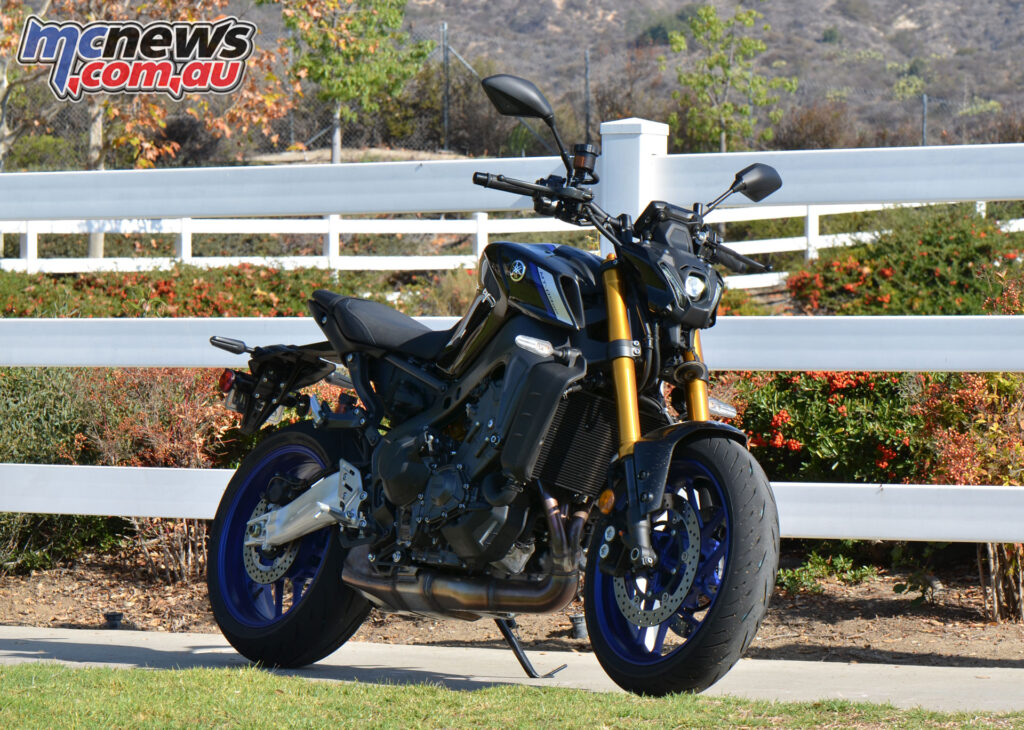
That bike is now a genuine alternative to the sporty sports-touring competition of the Ducati Multistrada and the BMW S 1000 XR, but what of the bike it’s based off in the MT-09? Or, more specifically, the hot-rod MT-09 SP?
As you may have guessed, the SP has also come under the microscope for 2021. This is essentially the same bike as the GT but stripped to the bone (you could look at it the other way and say the GT is the MT-09 built up).
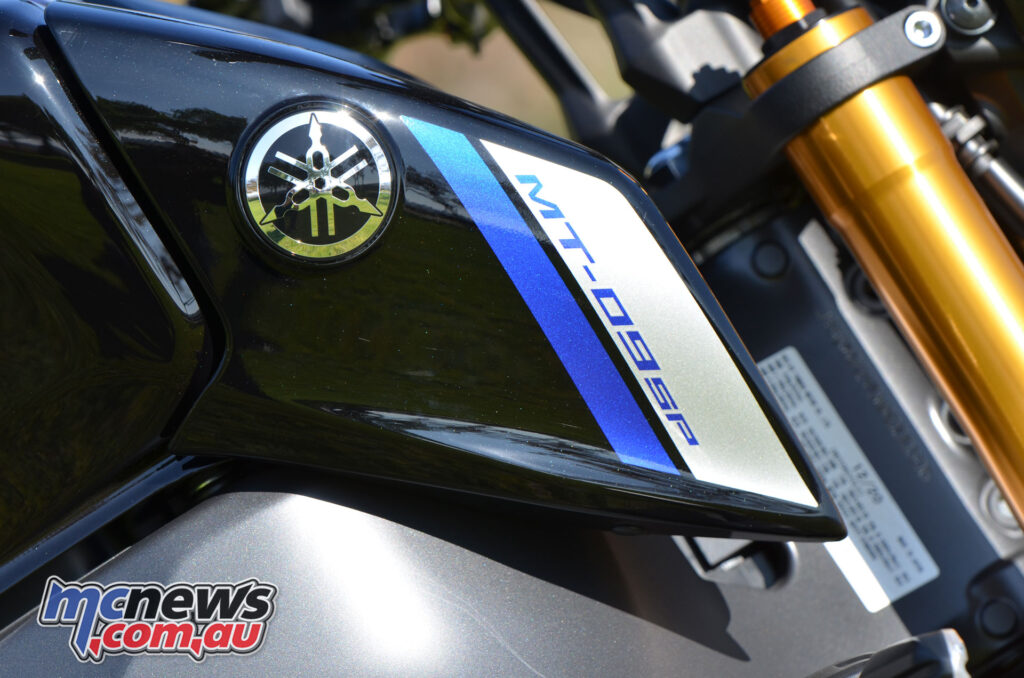
Inside is the enhanced 890 cc inline three-cylinder motor, a new chassis, swingarm and revised KYB/Ohlins suspension, a slimmer, sharper body complete with LED’s and new electronics that will hopefully keep everything on the straight and narrow.
The MT-09 is the original ‘Dark Side of Japan’ motorcycle, the slogan opening up a completely new world for Yamaha’s number crunching executives to explore. The first few iterations of the MT were pretty rough around the edges, with most of the comments slated at the ultra-snatchy nature of the throttle and fuelling plus the chassis’ tendency to not load the front up well enough to maximise its undoubted turn speed.
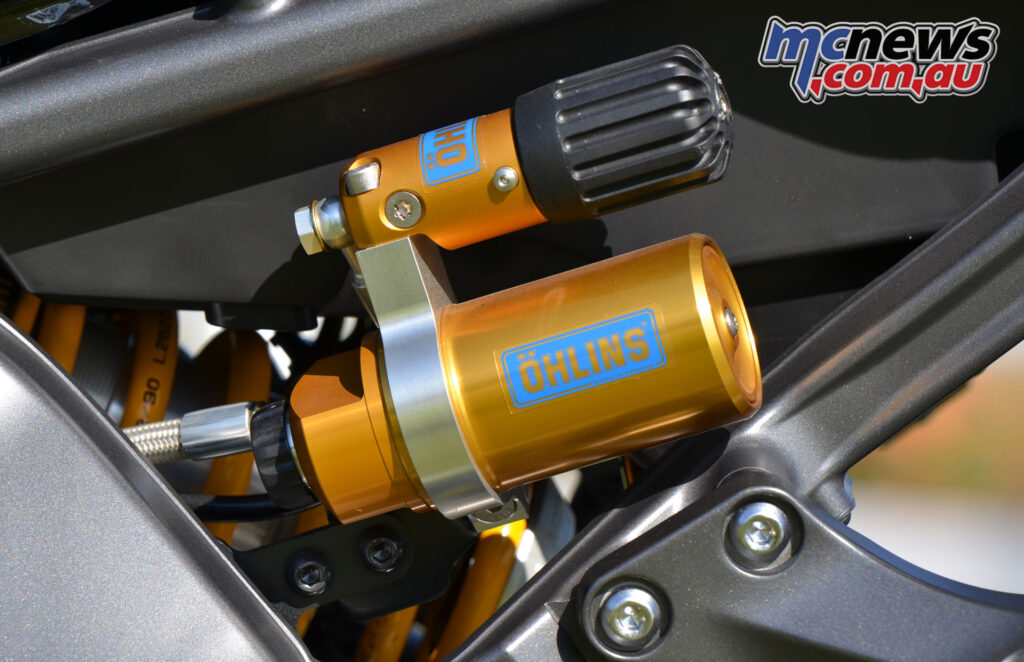
It got progressively better over the years, and in 2018 we got the SP version that bought the naked roadster into line with other Yamaha specials like the MT-10 SP and R1M superbike.
That SP got a strange mix of KYB forks up front and a fully-adjustable Ohlins for the rear suspension duties, which is curious because you’d think Yamaha would just throw some shiny gold Swedish legs on the front and then really call it a special edition.
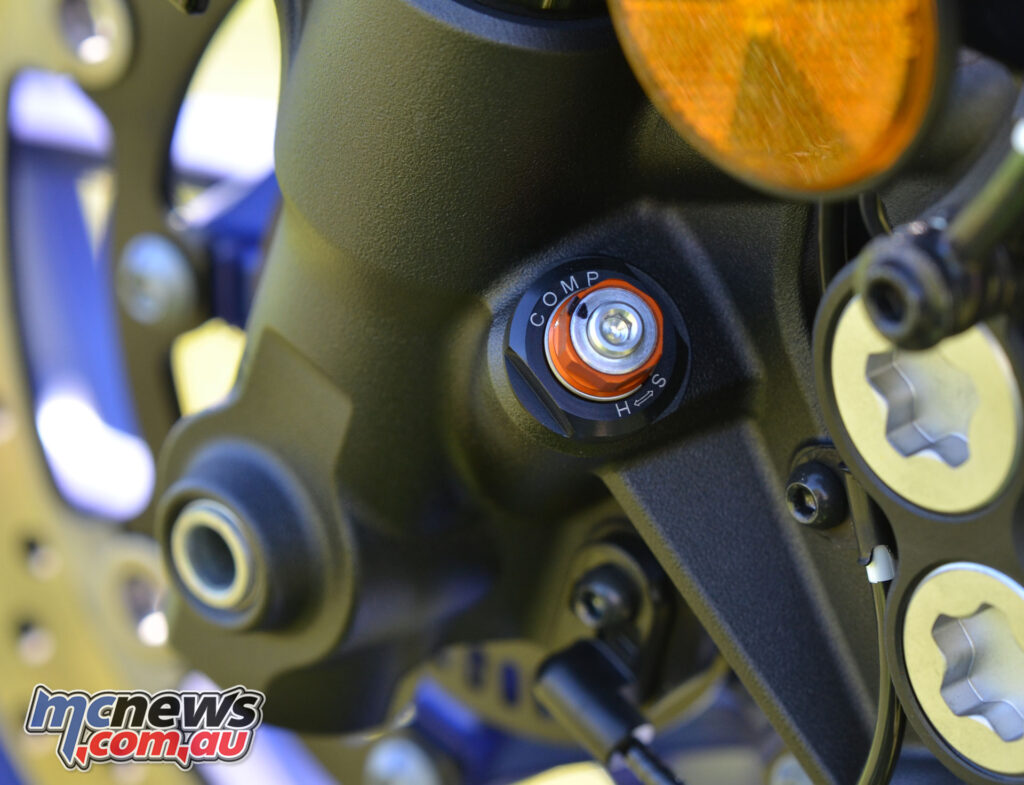
There’s not a lot that separates the base model MT and this SP version aside from cruise control and more traditional MT colours like the blue wheels and silver tank accents – which I think looks a lot better than the lairy red wheels of the base model.
Yamaha was one of the first to really go after the middleweight nakedbike segment with the original MT-09, and they’ve created somewhat of a monster in the process. Yamaha’s up against the Kawasaki Z900 ABS, Triumph 765 Street Triple, Ducati Monster, KTM 890 Duke and Duke R, MV Agusta Brutale 800, and probably a few others I can’t think of right now.
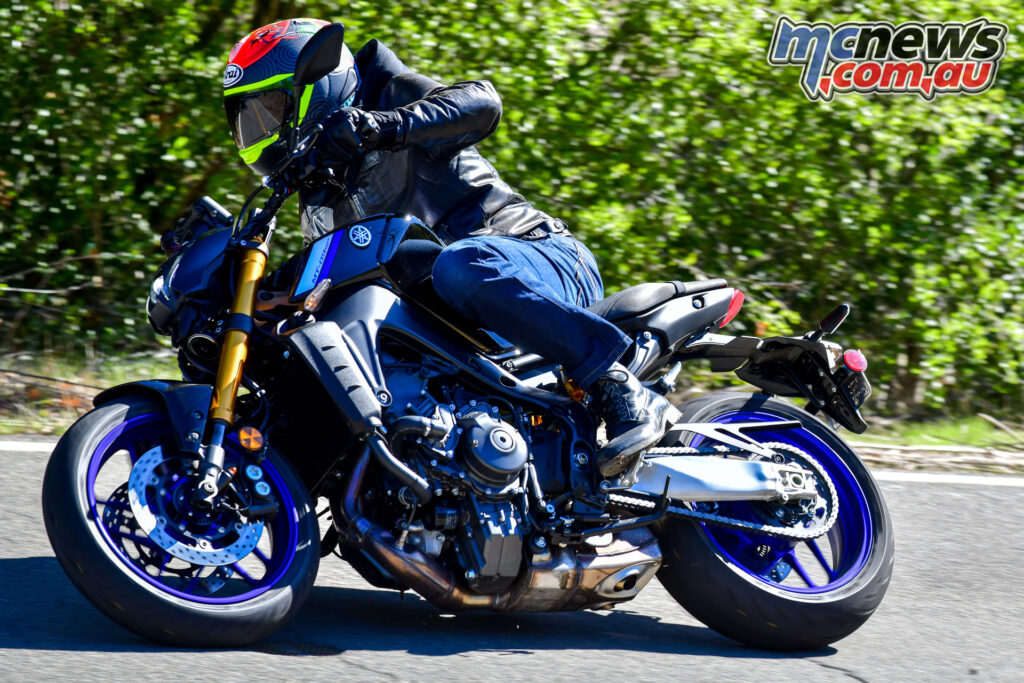
Each one of these bikes are executed extremely well, each offering different performance capabilities largely based on price, so Yamaha needed to come packing fire for the 2021 MT-09 SP to be a sales success.
Yamaha’s offering the SP for $17,299 ride away, representing a $2050 increase over the base model. But when you consider the going rate for an Ohlins shock and a revalve of the front suspension, you’re getting a decent amount of bike for your money.
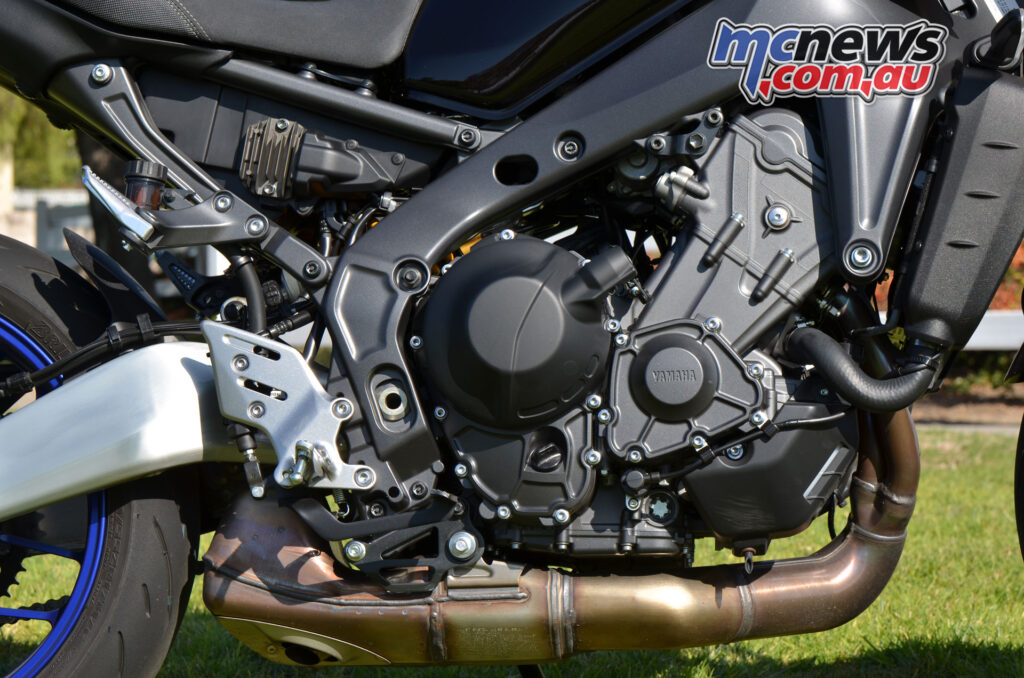
Under the hood of the new SP sits the same 890 cc inline triple that’s on the base model, and I’ve got to put my hand up and admit I didn’t expect the new motor to be so rowdy. After my afternoon on the GT a few weeks back I knew some of what to expect, but the 30 kg lighter MT (with fuel) makes the motor feel like it’s got an extra 30 cc.
The new 890 cc triple pulls harder than an 18-year-old after his first strip club night. The clunky, jerky throttle of years past has been somewhat neutered in the 2021 edition, to the point where small throttle openings when cranked over doesn’t have the bike lurching forward underneath you. Instead, Yamaha’s mapped in quite a nice throttle response, which allows you to be more precise in slower speed situations.
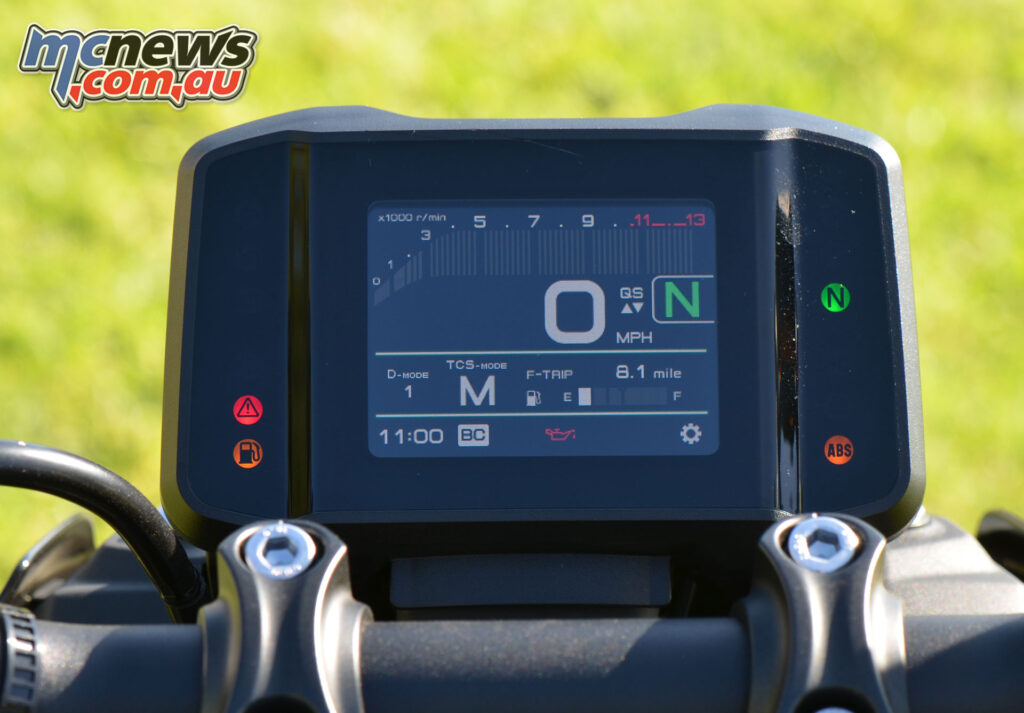
When things get rowdy, however, there’s infinitely more performance than there was a couple of years ago. The motor has a definite kick in the power delivery at 5000 rpm and it begins to pick up speed real quick from here until 10,000 rpm.
That’s a very healthy number of revs to play with, and the always-there low-down torque is now matched by a top-end that gives me slight reminders of the R6 and its banshee wail. This engine in a track-specific sportsbike chassis would really be something else…
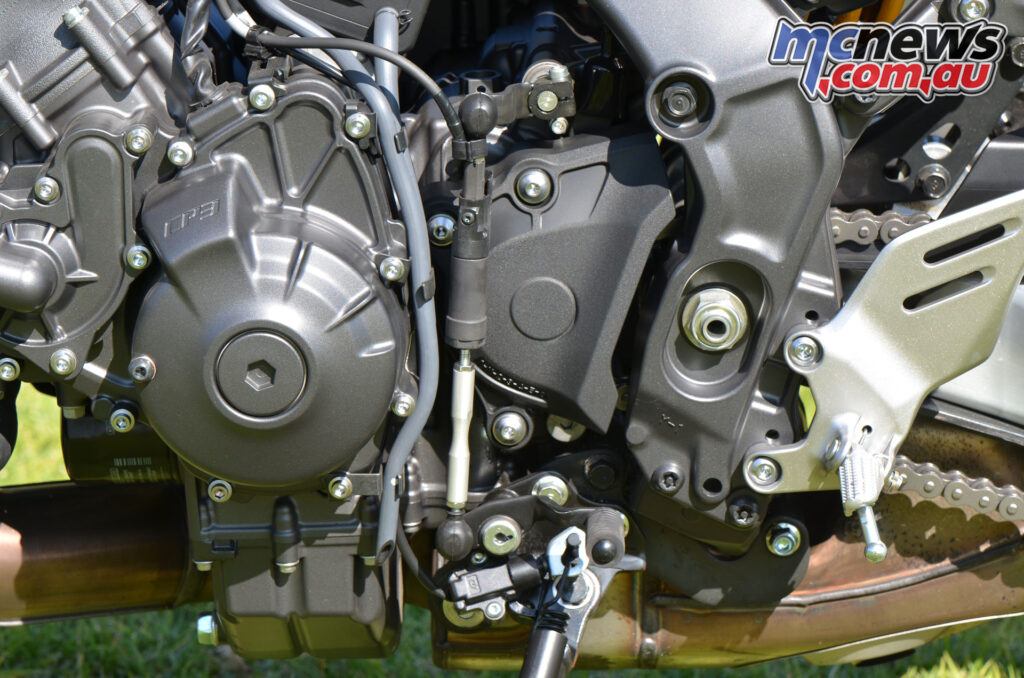
Yamaha’s fitted an up and down quickshifter to the gearbox that’s a nice touch, although it doesn’t have the smoothest of cuts. Still, as a standard feature this is nothing to sneeze at, as some of the class competitors don’t even come with the option of one.
That brings me to the electronics, which are somewhat confusing. You get a six-axis IMU, traction, wheelie (it’s called lift) control and ABS, plus four riding modes for the Yamaha D-mode throttle—that’s all well and good. But there’s a second traction control menu on the left handlebar that operates independently of the one inside the main menu on the dash as is accessed by the a little button where the high beam switch would be.
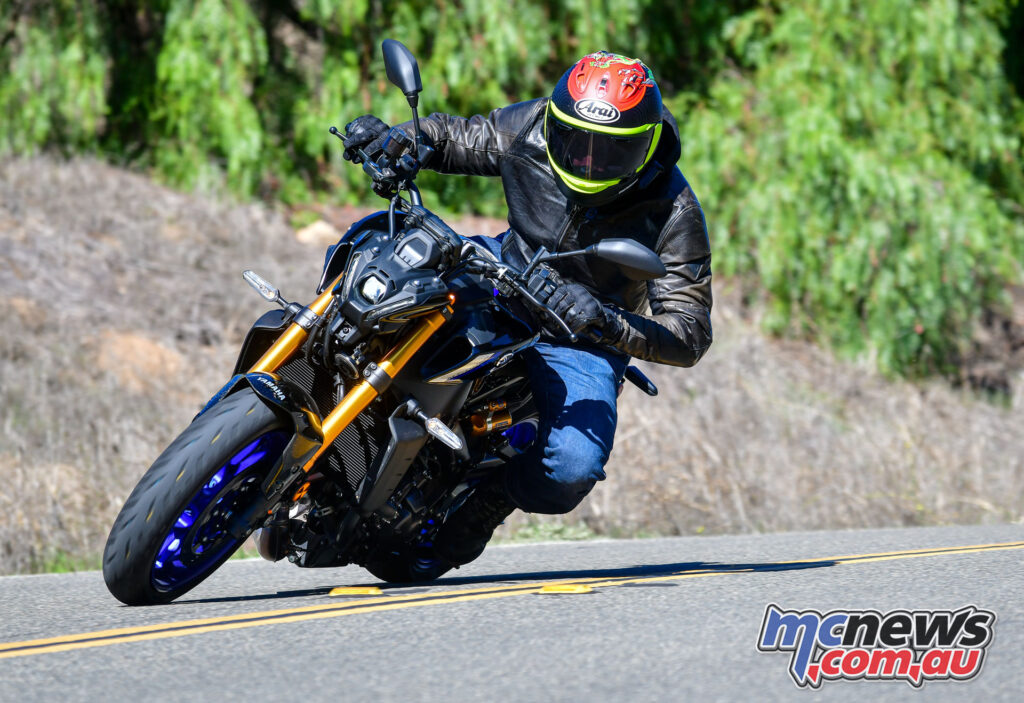
This is, as far as I could figure out, the anti-wheelie traction control, because you can switch lift control all the way off, put your TC down to level one and your ABS on one, but if the menu on the left of the main dash isn’t in traction control M (for manual), you can’t do wheelies. This is quite the frustrating thing, and even the folks I’ve spoken with at Yamaha say it’s not a well-executed system.
Once you’ve got M selected, you can wheelie to your heart’s content—this is a good thing, because this bike was designed to go on the back wheel (too bad I hadn’t figured all this electronic shittery out before we did the photos).
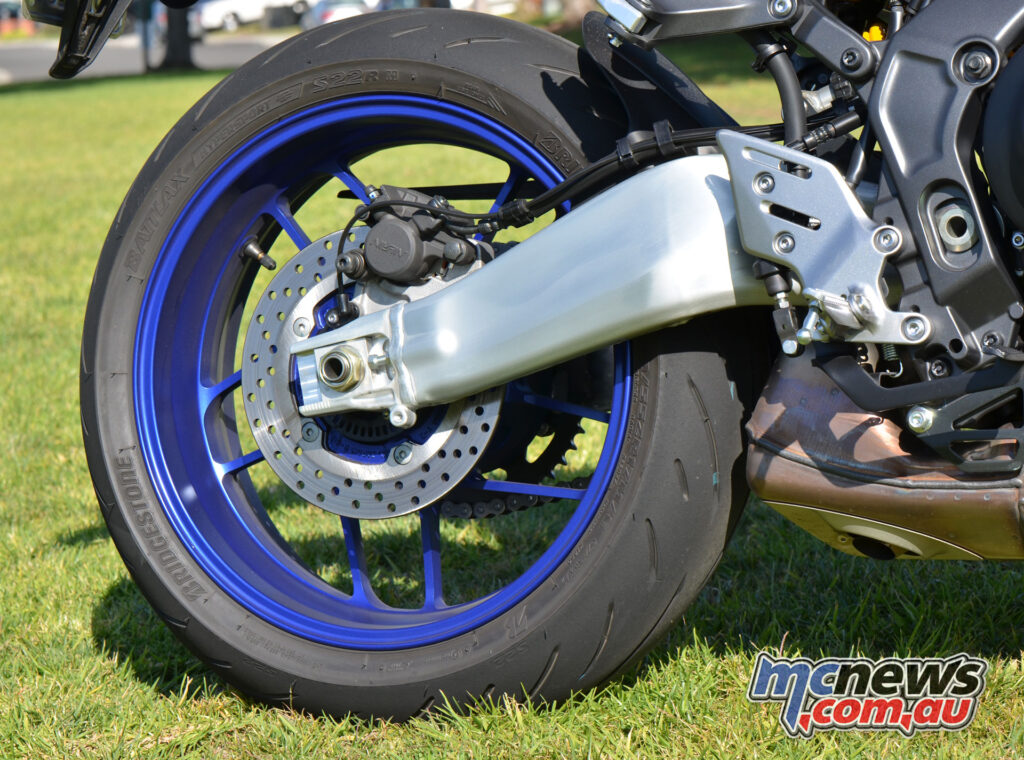
Let’s switch to the chassis.
Although this is the SP version, the personality trait of high in the front and low at the back is still present, but it’s not as bad as I remember. This is despite the new frame and swingarm, which Yamaha claims offers a 50 percent increase in lateral rigidity for better straight line stability.
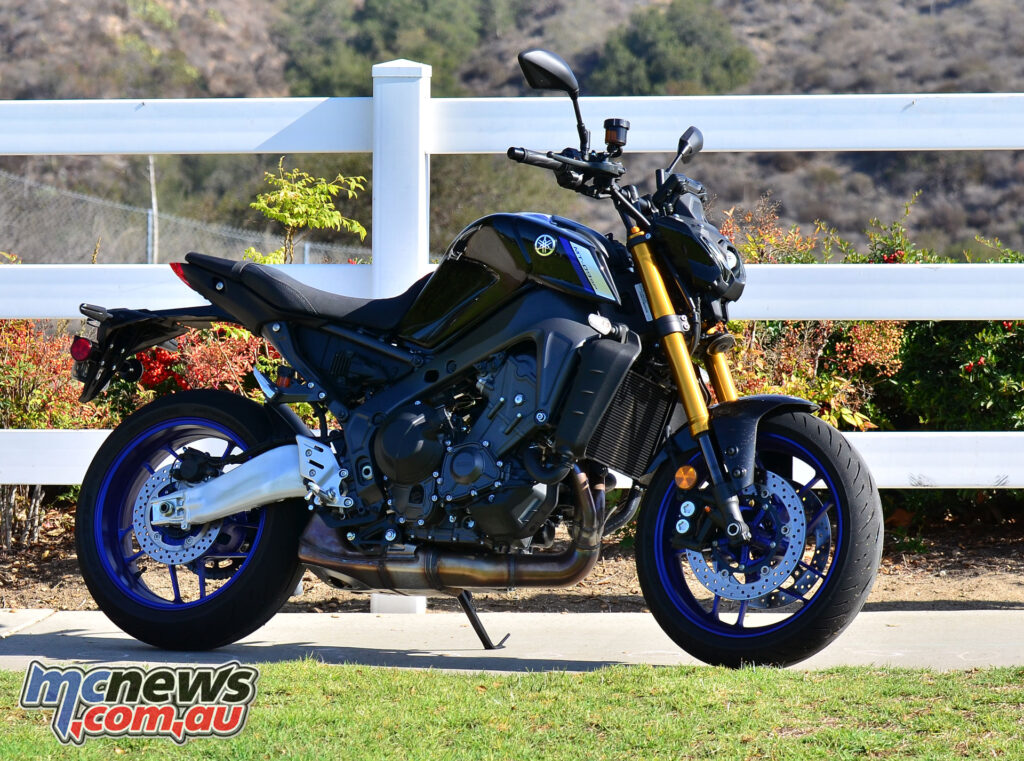
It’s a feature of the chassis and ride position architecture, whereby the higher tank and handlebar set-up over some of the SP’s class rivals contributes to the problem.
The ride position is thankfully adjustable, with the handlebars and footpegs adjustable in two different positions. The handlebar clamps can be rotated 10 mm forward, and the footpeg mounts can be raised 14 mm higher as well as 4 mm rearward. The wide bars give plenty of leverage and you’re never put in an uncomfortable stance on the SP and the plank seat remains decently comfortable after an hour on board.
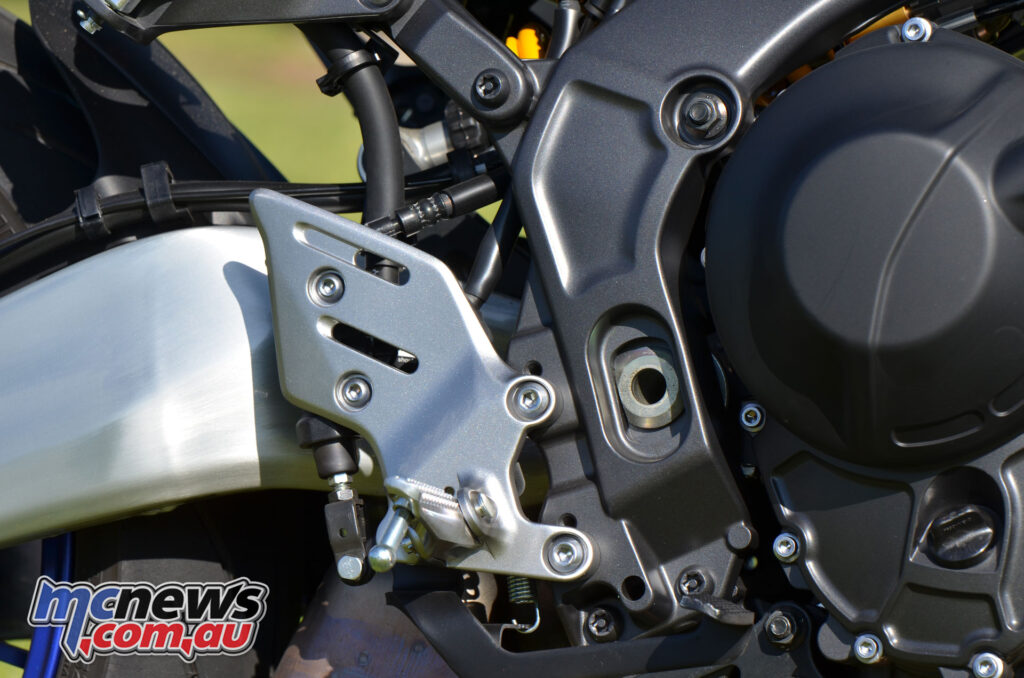
Even though front wheel feel at the bars isn’t as nice as some, there’s no doubting you can really hustle the SP along quickly. It’s a bit like a 900 cc supermotard in that it’ll go from upright to full lean stupidly quick. It’s just let down a little by front-end stability when you get on the side of the tyre.
The rear suspension helps the chassis track nicely, and having the remote preload adjuster is nice in case you want to make fast adjustments to stop the shock sinking down its stroke quickly under acceleration.
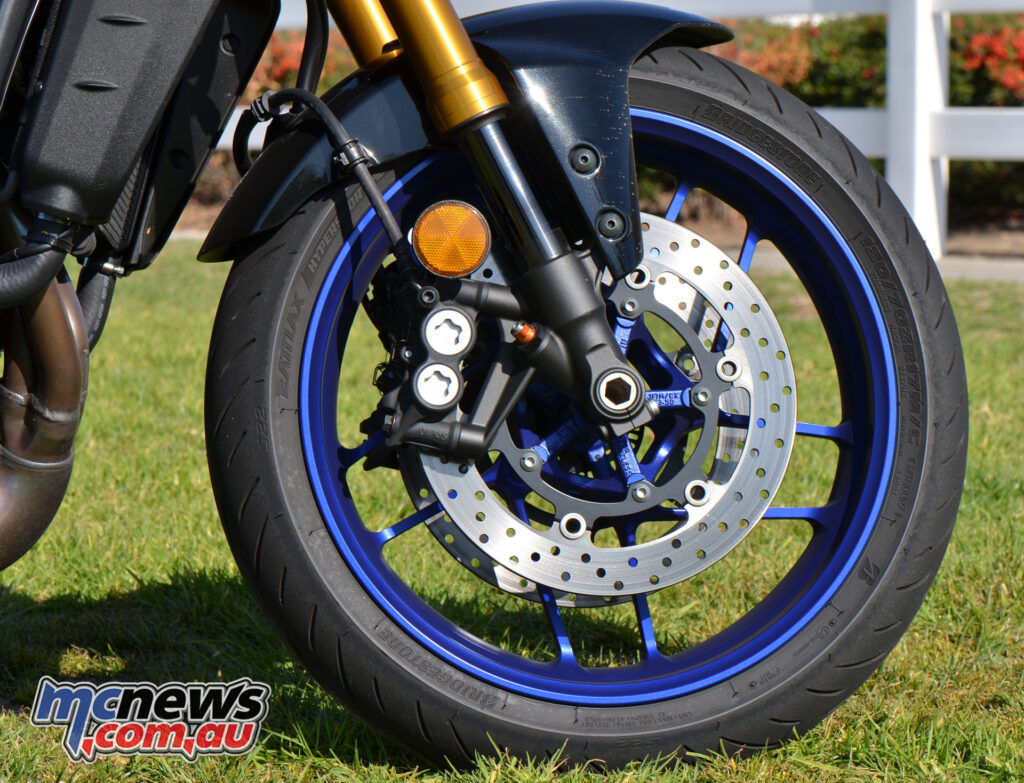
I can’t say I was overly impressed with the brakes on the SP but this is a recurring theme with sporty-ish Yamahas these days. The R1M suffers badly here with brakes that last about five laps when used hard, and although the SP isn’t in that same league in terms of extreme performance, feel at the lever could be better.
Yamaha’s got the Brake Control system that modulates pressure on the front and rear brakes under emergency braking situations. The feel at the lever is a little odd, especially given the ABS can pump in quickly when the brakes are applied with a decent amount of force.
The addition of Brake Control is another middleman between your braking fingers and the force that reaches the caliper, but there’s a new master-cylinder fitted so braking power is never in question.
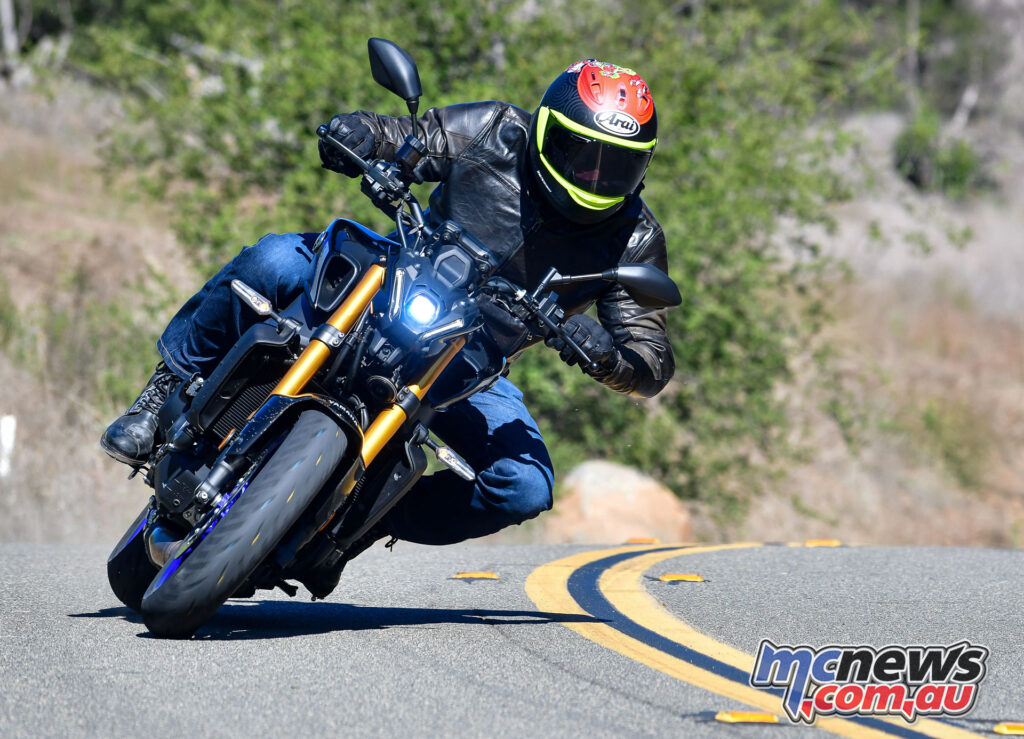
This is probably the most naked nakedbike on the market, so the phrase ‘wind protection’ doesn’t really mean a lot here. You are your own wind protection on the SP, so the ride can be a little tiring, but I have ridden MT’s in the past with little screens mounted above the light and it does make a surprising difference for a rider’s fatigue.
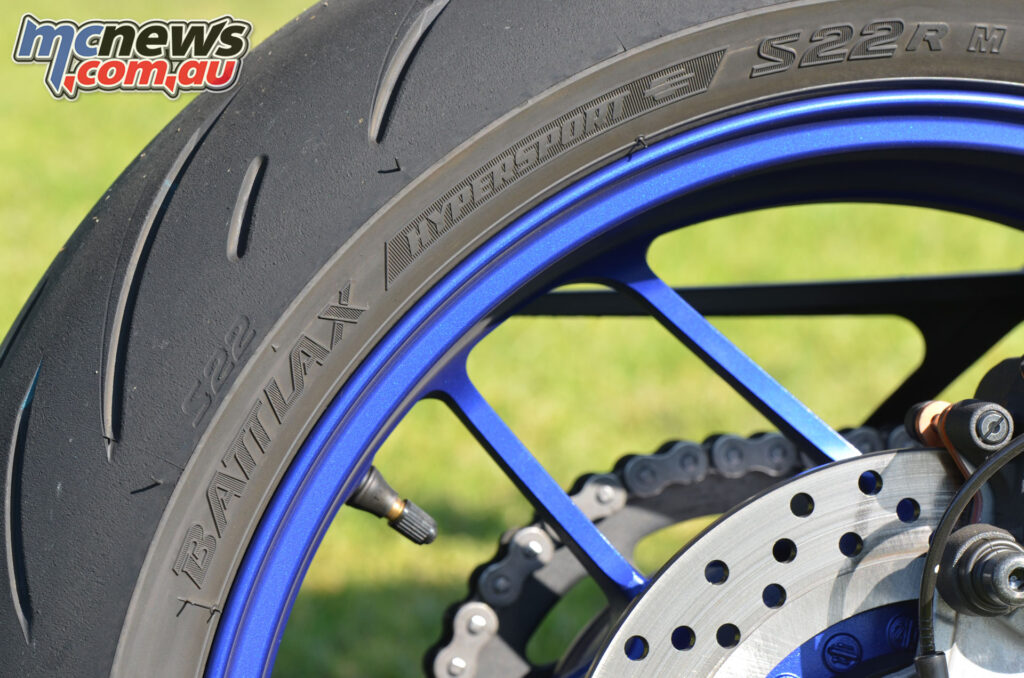
However, let’s be honest, this is a hoon bike that isn’t going to be touring from Sydney to Perth anytime soon, so keep it looking like a bike designed for a guy fresh outta jail, cool?
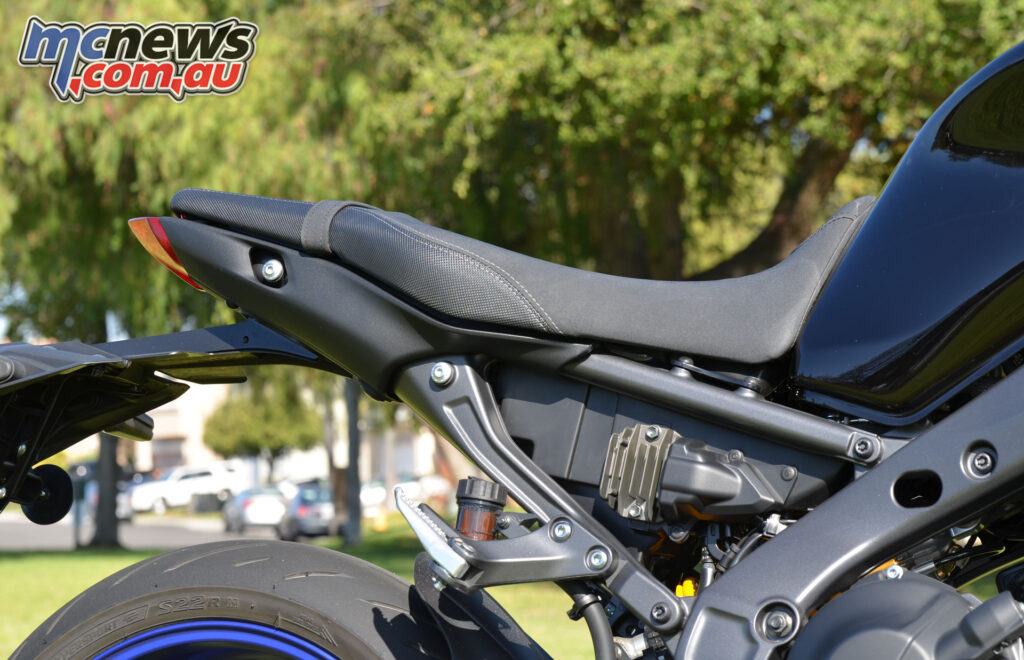
Yamaha’s MT-09 SP is a very good bike with a few flaws (which they all have), but for under $20,000 it’s a pretty decent deal. One thing the model has on its side is legendary reliability, so if you pick one of these things up now it’ll still be going strong in 10 years with soothing more than a few oil changes.
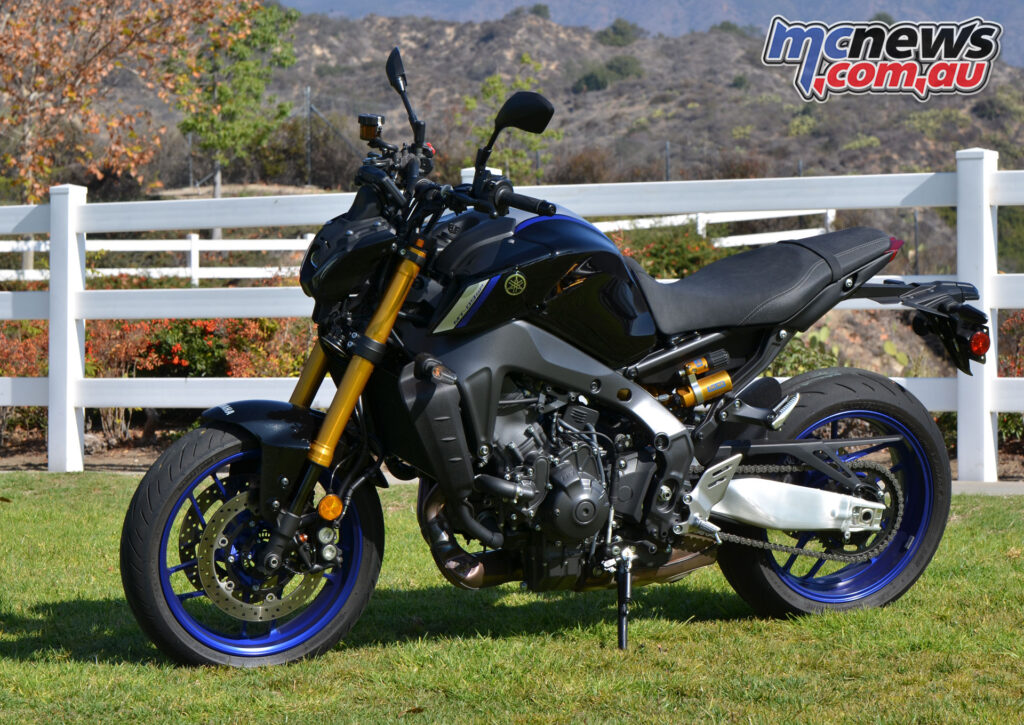
This is a bike with serious attitude, and as a between-the-lights street bike, this thing takes some beating.
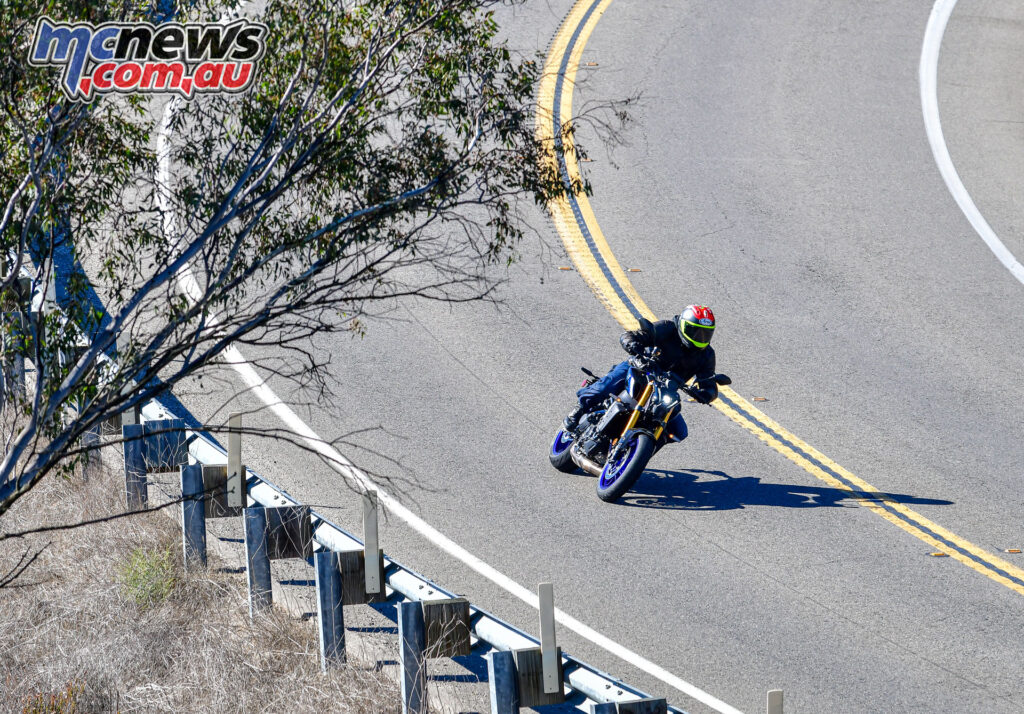
2021 Yamaha MT-09 SP Specifications
| 2021 Yamaha MT-09 SP Specifications | |
| Engine Type | Liquid-cooled, four-stroke, DOHC, four-valve, three-cylinder |
| Displacement | 889 cc |
| Bore x Stroke | 78.0 x 62.1 mm |
| Compression Ratio | 11.5 : 1 |
| Power | 119 PS (87.5 kW) @ 10,000 rpm |
| Torque | 93 Nm @ 7000 rpm |
| Lubrication System | Wet Sump |
| Fuel Management | Fuel Injection |
| Ignition | TCI |
| Starter System | Electric |
| Fuel Tank Capacity | 14 L |
| Final Transmission | Chain |
| Transmission | Constant mesh 6-speed |
| Clutch | Slip & Assist clutch |
| Frame Type | Die-cast aluminium deltabox frame, CF diecast aluminium subframe, aluminium swingarm |
| Suspension Front | KYB USD fork, high and low speed compression, rebound and preload adjustable, DLC coated stanchions |
| Suspension Rear | Fully adjustable Öhlins rear shock with external preload adjuster |
| Brakes Front | Dual four-piston radial calipers, 298 mm rotors, Cornering ABS |
| Brakes Rear | Single two-piston Nissin caliper, 245 mm rotor, Cornering ABS |
| Tyres F, R | Bridgestone S22, 120/70 ZR 17M/C(58W), 180/55 ZR 17M/C(73W) |
| Wheels | 10-spoke spin-forged wheels, |
| Electronics | IMU, Cornering TCS, SCS, LIF, Ride Modes, Quickshifter up/down, Cruise Control |
| Length | 2090 mm |
| Width | 795 mm |
| Height | 1190 mm |
| Seat Height | 825 mm |
| Wheelbase | 1430 mm |
| Ground Clearance | 140 mm |
| Wet Weight | 190 kg |
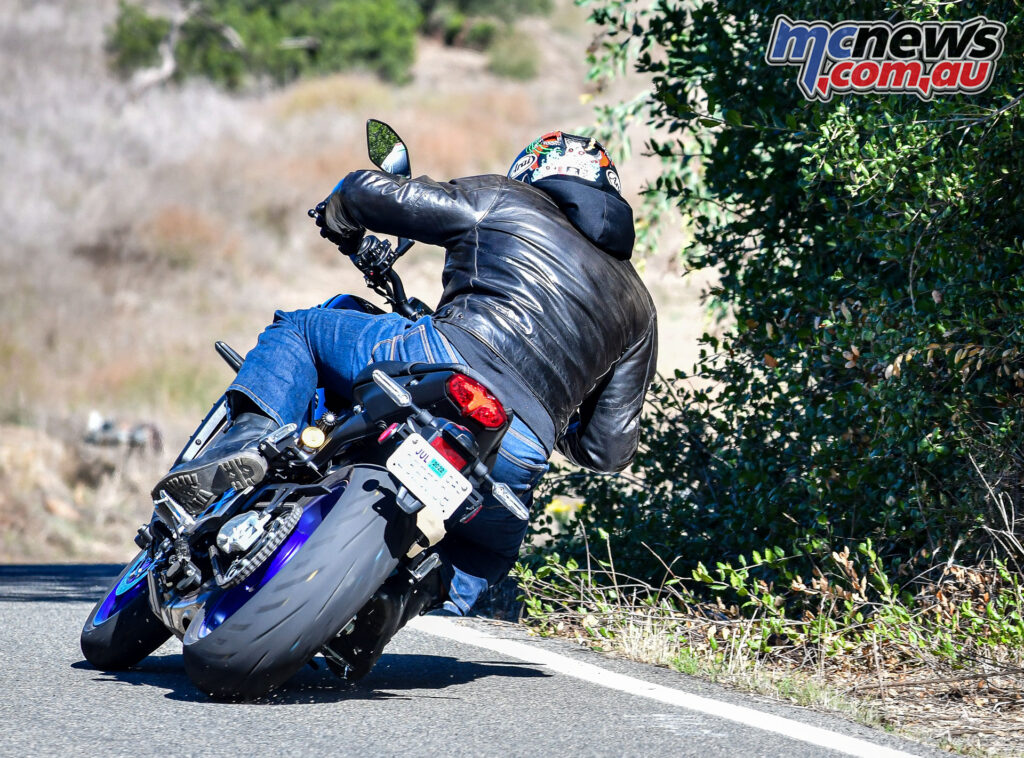
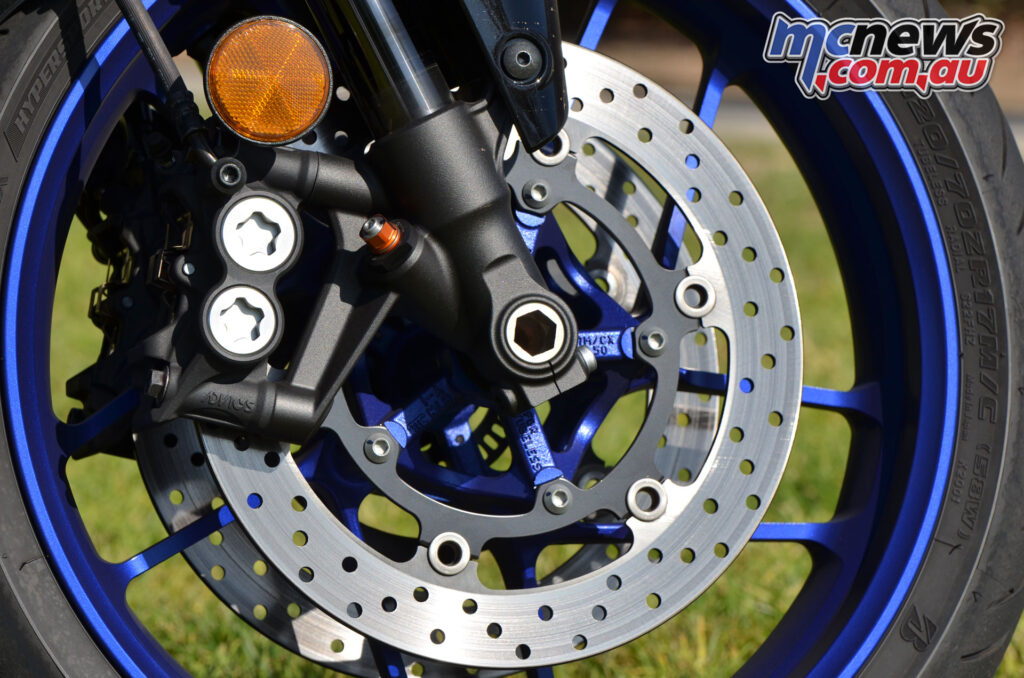
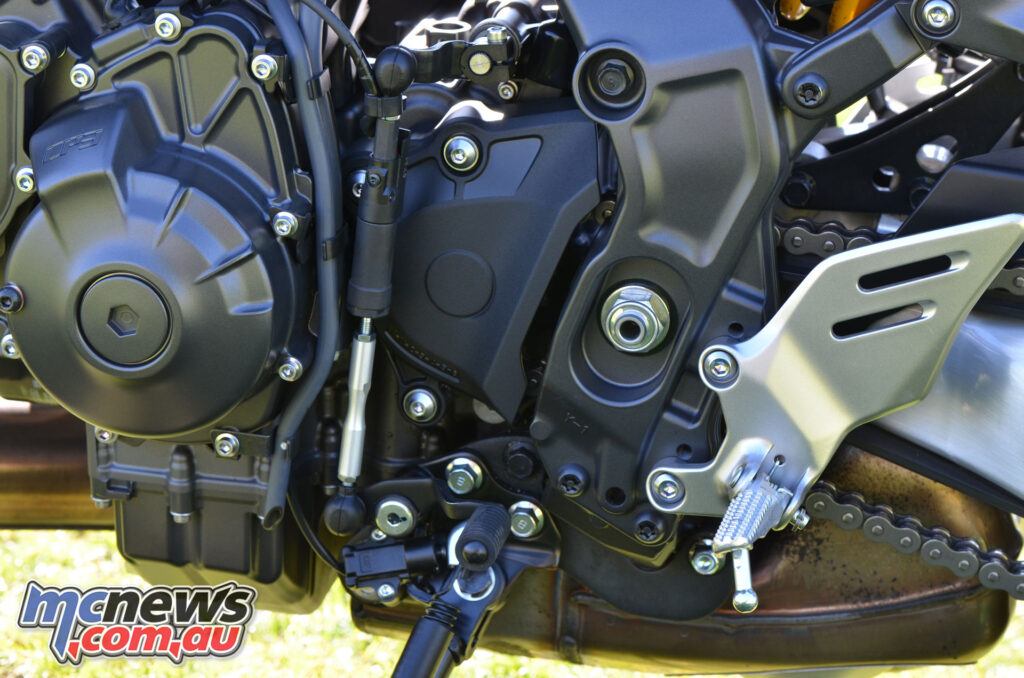
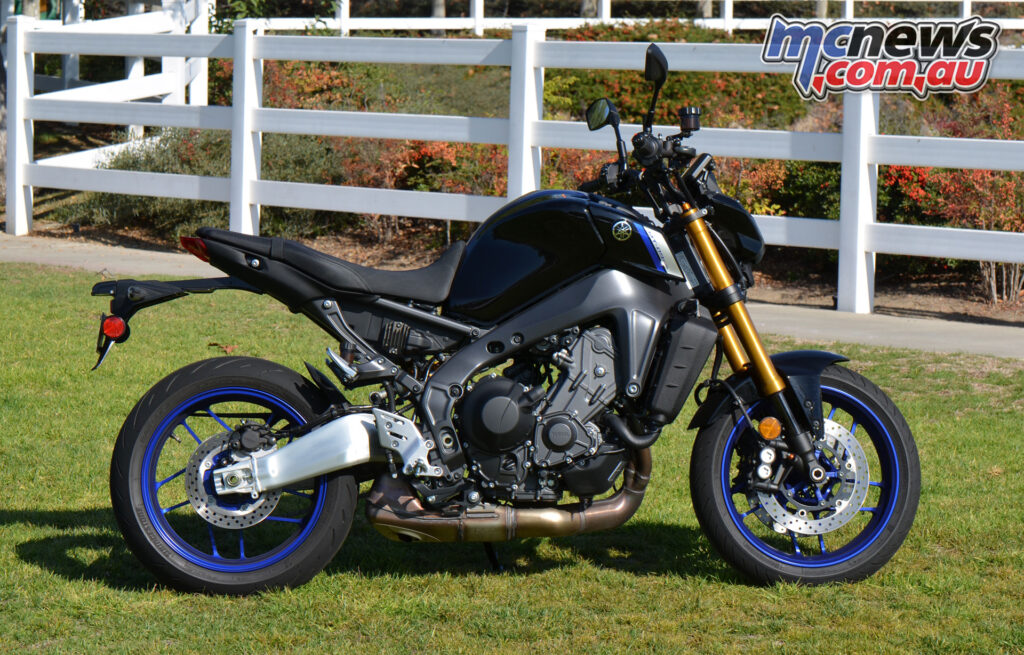
Source: MCNews.com.au
